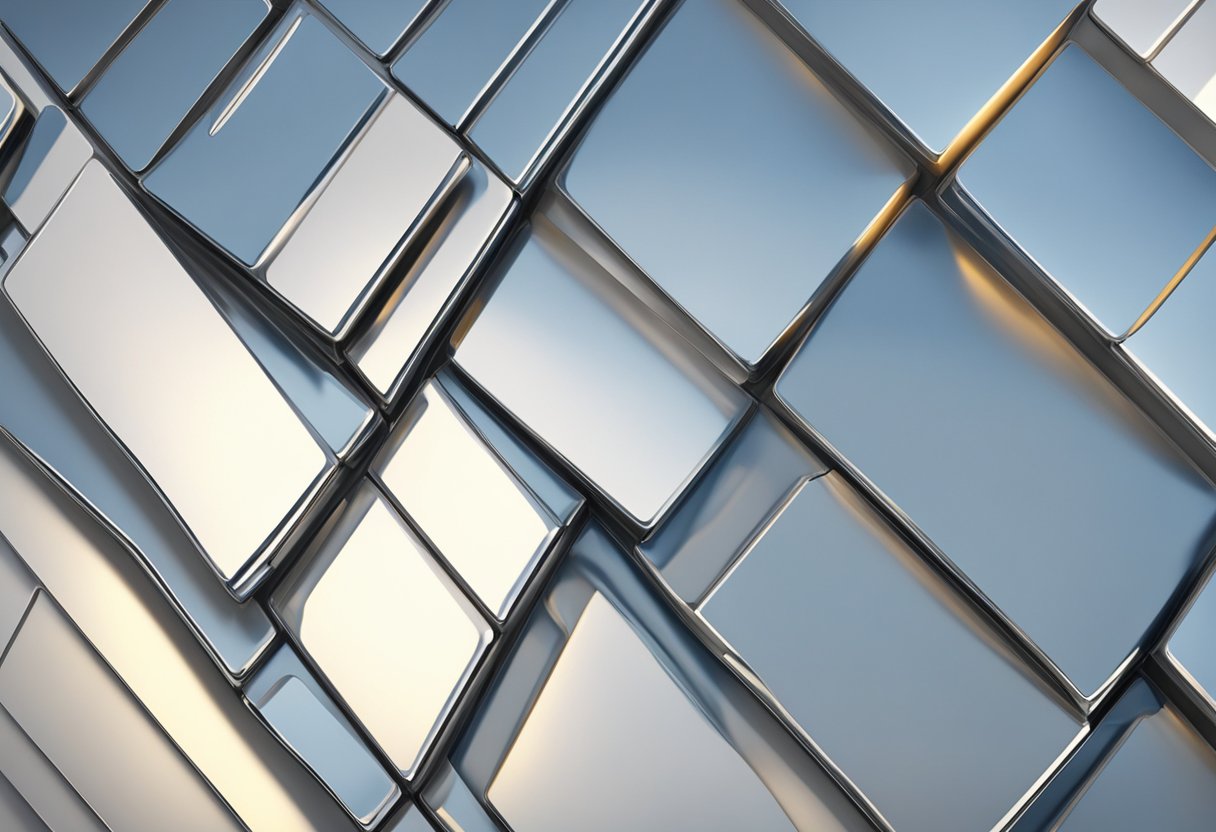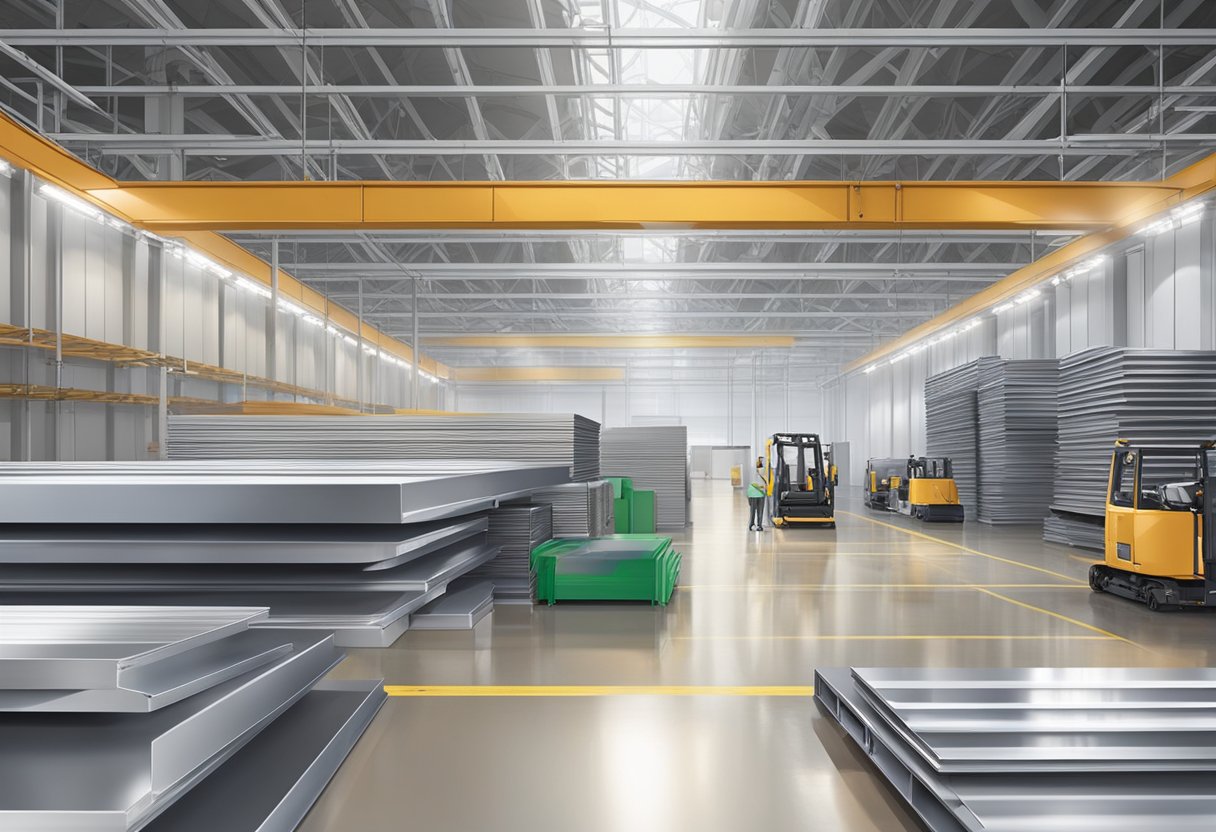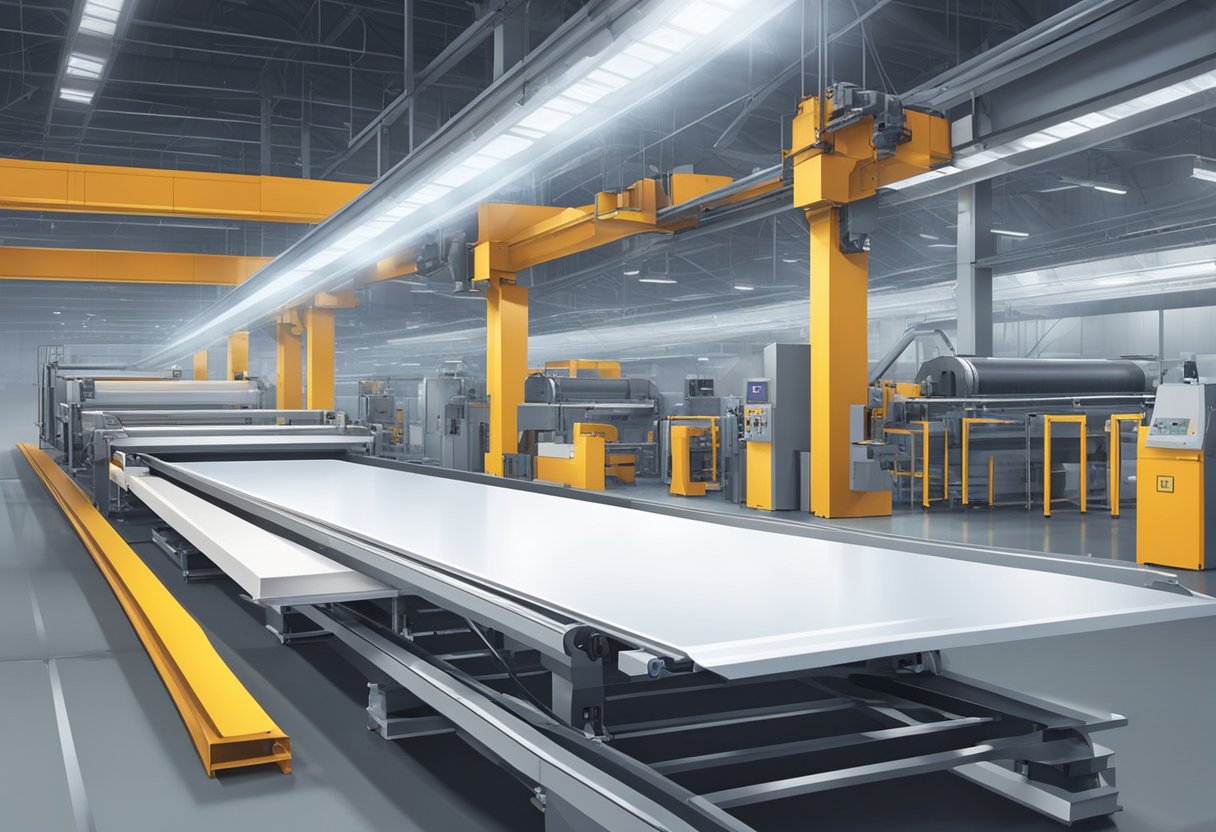Aluminum Composite Panel: An Introduction

Aluminum Composite Panel (ACP) is a flat panel consisting of two thin aluminum sheets bonded to a non-aluminum core. It is a lightweight and durable material commonly used in the construction industry for exterior cladding, interior partitions, and signage. ACP is also known as Aluminum Composite Material (ACM) or Aluminum Composite Sheet (ACS).
The popularity of ACP can be attributed to its versatility, affordability, and aesthetic appeal. ACP comes in a variety of colors, finishes, and textures to suit different design requirements. It can mimic the look of natural materials such as wood, stone, or marble, and can be easily cut, bent, or shaped to create intricate designs. ACP is also resistant to weather, fire, and corrosion, making it a popular choice for outdoor applications.
Overall, ACP is a widely used material in the construction industry due to its numerous advantages. In the following article, we will delve deeper into the properties, applications, and installation of ACP to provide a comprehensive guide for those interested in using this material for their projects.
History of Aluminum Composite Panels

Aluminum composite panels (ACP) were first introduced in the 1960s as a lightweight and durable alternative to traditional building materials. The panels consist of a core material, usually polyethylene, sandwiched between two thin sheets of aluminum.
The first ACPs were used primarily in the aviation and aerospace industries due to their lightweight properties. However, as technology improved and production costs decreased, ACPs became more widely used in the construction industry.
In the 1980s, ACPs gained popularity in architecture due to their versatility and aesthetic appeal. The panels can be easily cut and shaped to fit any design, and the aluminum surface can be coated with a variety of finishes to achieve a desired look.
Despite their popularity, ACPs have faced scrutiny in recent years due to concerns over their fire safety. In 2017, a tragic fire at Grenfell Tower in London, which was clad in ACPs, resulted in 72 deaths. This event sparked a global conversation about the safety of building materials and led to increased regulations and testing standards for ACPs.
Today, ACPs continue to be a popular choice in architecture and construction, but with a renewed focus on safety and compliance.
Composition and Properties

Core Materials
Aluminum composite panels (ACP) consist of two aluminum sheets bonded to a non-aluminum core material. The core material can be made of a variety of materials, such as polyethylene (PE), fire retardant (FR) mineral-filled core, or a corrugated aluminum core. The core material plays a significant role in determining the panel’s properties, such as its fire resistance, stiffness, and thermal insulation.
Aluminum Layers
The aluminum sheets used in ACP are typically coated with a layer of paint or a protective film to improve their durability and resistance to weathering. The thickness of the aluminum layers can vary depending on the intended use of the panel. Generally, the aluminum layers are thinner than those used in traditional aluminum sheets, which makes ACP lighter and easier to handle.
Coatings and Finishes
ACP can be coated with a variety of finishes, such as metallic, matte, gloss, or brushed finishes. These finishes can be achieved through a range of techniques, such as anodizing, powder coating, or laminating. The coatings and finishes not only enhance the panel’s aesthetic appeal but also improve its durability and resistance to weathering.
In terms of properties, ACP offers a range of benefits, including high strength-to-weight ratio, excellent flatness, low thermal expansion, and good fire resistance. These properties make ACP an ideal material for a wide range of applications, including building facades, signage, interior design, and transportation.
Manufacturing Process

Aluminum composite panels are manufactured using a continuous lamination process. The process involves bonding two aluminum sheets to a non-aluminum core material, typically made of polyethylene. The result is a lightweight, rigid, and durable panel that is suitable for a wide range of applications.
The manufacturing process starts with the preparation of the aluminum sheets. The sheets are cleaned and treated to ensure that they are free from any contaminants. They are then coated with a primer to improve adhesion between the aluminum and the core material.
The core material is also prepared by cutting it to the required size and shape. The core material is typically made of polyethylene, which is a lightweight and durable material that provides excellent insulation properties.
The next step is to bond the aluminum sheets to the core material. This is done using a process called continuous lamination. The process involves passing the aluminum sheets and core material through a series of rollers under high pressure and temperature. The pressure and temperature cause the aluminum sheets to bond to the core material, creating a strong and durable panel.
Once the panels are laminated, they are cut to the required size and shape. The edges of the panels are then finished to create a smooth and clean surface. The panels can be finished with a variety of coatings and colors to meet the specific requirements of the application.
Overall, the manufacturing process for aluminum composite panels is a highly controlled and precise process. The result is a high-quality panel that is suitable for a wide range of applications, including building facades, signage, and interior design.
Types and Classifications
Fire-Resistant Panels
Fire-resistant aluminum composite panels are designed to resist fire and prevent it from spreading. These panels are made using fire-resistant mineral-filled core material, which helps to slow down the spread of fire. The fire-resistant panels are classified into two categories based on their fire rating: Class A and Class B. Class A panels offer the highest level of fire resistance and are suitable for use in high-rise buildings, hospitals, and other structures where fire safety is a top priority. Class B panels are less fire-resistant than Class A panels but still provide a good level of protection against fire.
Non-Combustible Panels
Non-combustible aluminum composite panels are made using non-combustible mineral-filled core material. These panels do not burn, emit toxic gases, or produce smoke when exposed to fire. Non-combustible panels are ideal for use in buildings where fire safety is a top priority, such as hospitals, schools, and high-rise buildings.
Mirror Finish Panels
Mirror finish aluminum composite panels are designed to provide a reflective surface that can be used for decorative purposes. These panels are made using a special coating that gives them a mirror-like finish. Mirror finish panels are available in a range of colors and can be used for interior and exterior applications. These panels are suitable for use in commercial and residential buildings, as well as for signage and advertising purposes.
In summary, aluminum composite panels are available in different types and classifications based on their fire resistance, combustibility, and finish. It is important to choose the right type of panel for the intended application to ensure safety and durability.
Applications and Uses
Architectural Cladding
Aluminum composite panels (ACP) are widely used in architectural cladding due to their lightweight, durability, and aesthetic appeal. ACPs are commonly used in the construction of high-rise buildings, commercial and residential buildings, and exterior facades. The panels are available in a variety of colors, finishes, and textures, giving architects and designers the flexibility to create unique and visually appealing facades.
The panels are also easy to install, which makes them a popular choice for retrofitting and renovation projects. ACPs can be easily cut, drilled, and shaped to fit the desired design, and they can be installed using a variety of methods, including adhesive bonding, mechanical fastening, and cassette systems.
Signage and Displays
Aluminum composite panels are also used in the signage and display industry due to their versatility, durability, and cost-effectiveness. The panels can be printed on using digital printing technology, making them an ideal choice for creating high-quality, eye-catching signage and displays.
ACP panels are also lightweight, which makes them easy to transport and install, and they can be cut and shaped to fit the desired design. The panels are also weather-resistant, which means they can be used both indoors and outdoors, making them a popular choice for a variety of signage and display applications.
Transportation Industry
Aluminum composite panels are also used in the transportation industry due to their lightweight and durability. ACP panels are commonly used in the construction of buses, trains, and other vehicles, as they help to reduce the overall weight of the vehicle, which can lead to improved fuel efficiency.
The panels are also easy to clean and maintain, which makes them a popular choice for the transportation industry. ACP panels can be easily wiped down with a damp cloth, and they are resistant to scratches and dents, which means they can withstand the wear and tear of daily use.
In summary, aluminum composite panels are a versatile and cost-effective material that can be used in a variety of applications, including architectural cladding, signage and displays, and the transportation industry. With their lightweight, durability, and aesthetic appeal, ACPs are an ideal choice for architects, designers, and manufacturers looking for a high-quality, reliable material.
Installation Techniques
Mechanical Fixing
Aluminum composite panels can be mechanically fixed to the building structure using several methods. One common method is the cassette system, in which the panels are attached to an aluminum subframe using a clip and rail system. This method provides a secure and stable fixing, and allows for easy replacement of individual panels if needed. Another method is the tray system, in which the panels are fixed to a tray and then attached to the subframe. This method provides a more economical option, but may not be as secure as the cassette system.
Adhesive Bonding
Adhesive bonding is another installation technique for aluminum composite panels. This method involves bonding the panels directly to the building structure using a high-strength adhesive. It is important to ensure that the adhesive is compatible with both the panel and the building substrate to ensure a strong bond. This method is often used for curved or irregular surfaces, as it allows for more flexibility in panel installation.
When installing aluminum composite panels, it is important to follow the manufacturer’s guidelines and recommendations for installation. This includes proper panel spacing, subframe spacing, and fixing methods. It is also important to ensure that the panels are installed in accordance with local building codes and regulations.
Overall, aluminum composite panels offer a versatile and durable cladding solution for buildings. With proper installation techniques, these panels can provide a long-lasting and visually appealing finish to any building.
Performance and Durability
Weather Resistance
Aluminum composite panels are highly resistant to weather conditions, making them a popular choice for both indoor and outdoor applications. They are designed to withstand extreme temperatures and harsh weather conditions without losing their structural integrity or aesthetic appeal. The panels are also resistant to UV rays, which means they will not fade or discolor over time. This makes them an ideal choice for buildings located in areas with high levels of sunlight.
Impact Resistance
Aluminum composite panels are known for their exceptional impact resistance. They are designed to withstand heavy impacts without cracking or denting. This makes them ideal for use in high-traffic areas, such as airports, hospitals, and shopping malls. The panels are also resistant to scratches and abrasions, which means they will maintain their appearance even after years of use.
Maintenance and Care
Aluminum composite panels are low maintenance and easy to care for. They require no special cleaning products or techniques and can be easily cleaned with a mild detergent and water. The panels are also resistant to corrosion, which means they will not rust or deteriorate over time. This makes them a cost-effective choice for building owners and managers who want to minimize maintenance costs and maximize the lifespan of their building’s exterior.
In conclusion, aluminum composite panels offer exceptional performance and durability. They are highly resistant to weather conditions, impact, and scratches, and require minimal maintenance and care. These qualities make them an ideal choice for a wide range of applications, from commercial buildings to residential homes.



